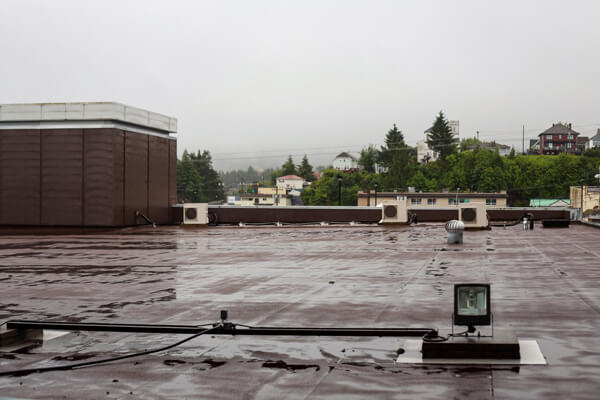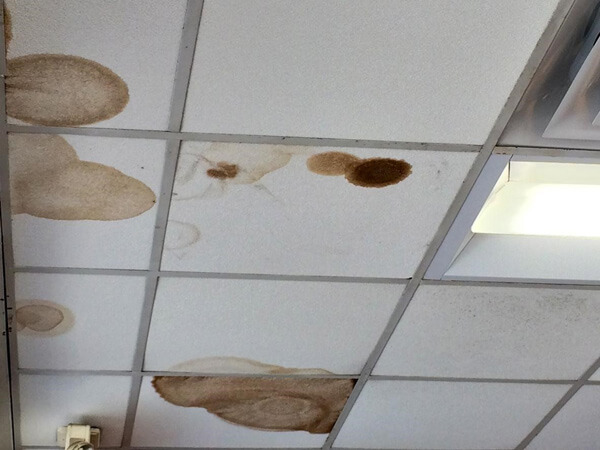As we move into spring, many areas of the country prepare for the possibility of strong storm systems to move through. Spring weather is unpredictable and often volatile. The temperature swings back and forth between warm and cold. When these different air masses collide, this can result in violent thunderstorms often producing heavy rains. This is the time of year to take preventive measures to ensure your commercial property is protected against damage that can happen when heavy rain occurs over a short period of time.
There are several areas around a commercial property and its grounds that may become potential problems during heavy rainstorms. Some of these issues may be addressed by your facilities maintenance staff as they perform their routine building maintenance tasks. Other work is best left to professional contractors who are equipped to perform inspections and perform preventive maintenance. Here are some of the common sources of potential water damage:
Roofs
This is probably the most obvious area of a building that may need attention. A roof leak can damage the structure of the building, leading to costly repairs. This may include damage to the ceiling, floor coverings, and insulation. Contents of the building may be damaged or ruined. The electrical system may be affected, as water intrusion can cause wires to short. A serious health consequence stemming from a roof leak is the growth of mold and mildew. It only takes 24-48 hours for these microorganisms to begin growing.
Commercial buildings with flat roofs are more likely to develop leaks as they don’t allow for easy runoff. Some red flags indicating roof damage are blisters or bubbles in the roof, cracks or tears in the roofing material, and damaged flashing. Poor drainage and debris blocking the drains can cause areas of standing water to remain after a rainstorm. Periodic inspections by a commercial roofing contractor can identify problem areas that need attention.
Gutters and Downspouts
Clogged gutters and downspouts do not properly collect and carry runoff water from the roof. They should be routinely inspected and cleaned when necessary. Leaf debris and pine needles can cause gutters to back up and overflow or leak at the seams. Water coming from the downspouts should be channeled away from the building to prevent flooding or foundation damage.
Parking Lots
Paved parking lots collect runoff water during rainstorms. They should be designed to carry the water to a storm drain system. When parking lot drains become clogged with trash and debris, water can flood back into the building. The flooding can also damage the building’s foundation. Regular storm sewer maintenance is key for commercial buildings. Many cities have ordinances requiring commercial property owners to maintain their stormwater management facilities. A qualified inspector can identify problems and perform storm drain cleanup to remove debris from the drains, lift stations, and catch basin.
Water damage to your commercial building can interrupt your business and put the health and safety of your employees, tenants, and customers at risk. Take preemptive action to prevent or minimize potential damage to the property with McKenney’s Building Services.
Contact McKenney’s to learn more about protecting your commercial property from the consequences of heavy rain.







